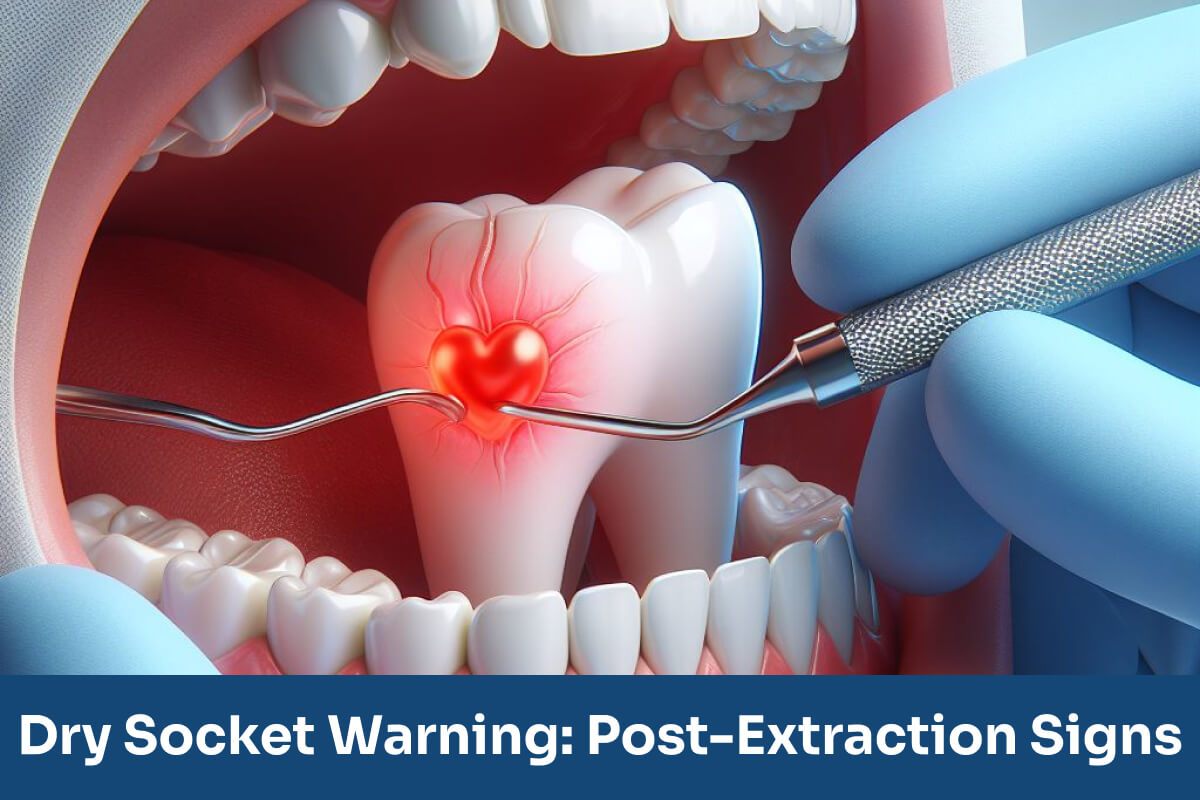

Wisdom teeth, also known as the third molars, are often extracted due to issues such as impaction, crowding, or disease. This routine procedure, while common, can be accompanied by certain complications, with one of the most notorious being dry socket.
Understanding the signs and how to respond is crucial for anyone undergoing or considering this type of oral surgery. In this comprehensive guide, we will unravel the nuances of dry socket: from its definition and causes to the potential treatments and when it’s time to seek professional dental care.
After having your wisdom teeth removed, the goal is to focus on recovery. The term "dry socket" is enough to send chills down the spine of anyone well on the way to recovery. It refers to a condition where the blood clot either fails to develop in the tooth socket following extraction or it dislodges or dissolves before the wound heals. Typically, a blood clot is the first part of the natural healing process after a tooth extraction. When this critical step goes awry, severe pain and complications can ensue.
Dry socket, or alveolar osteitis, creates a scenario where there’s exposed bone within the empty tooth socket, causing intense pain and discomfort. While it's relatively rare, occurring in about 2-5% of all tooth extractions, it's a risk that patients should be aware of and how best to identify it.
Here we’ll delve into the key indicators — both physical and sensory — that dry socket may be developing.
This is not your average post-extraction discomfort. The pain of a dry socket begins about 2-3 days after the surgery and is often referred to as throbbing or sharp in nature. It radiates from the site of the tooth removal and can lead to headaches and earaches.
Halitosis, or persistent bad breath, is another potential sign of dry socket. The condition causes an unpleasant taste and odour, indicating debris caught in the empty socket.
Upon inspection, the site of extraction may reveal an empty space where the blood clot should be, showing the exposed socket where the tooth was removed.
Often described as a dissatisfying and persistent metallic taste in the mouth, it’s a result of the exposed bone and the fluids that it releases within the oral cavity.
Understanding the prevention is as vital as recognising the symptoms of dry socket.
When facing dry socket, you are likely to have a multitude of home remedies available but seeking professional help is always recommended. That said, some at-home methods to alleviate the pain include rinsing the mouth with salt water to keep the area clean and using over-the-counter pain relievers specifically recommended by a healthcare provider. Ultimately, treatment by a professional generally involves cleaning the socket and applying a medicated dressing to promote healing.
As mentioned, recognizing the signs and seeking treatment at the right time is crucial. Here are the indications that it's time to pick up the phone and call your dentist.
If you experience severe, excruciating, or worsening pain after a tooth extraction, it's time to consult your dentist. They will determine if the situation calls for further intervention or just symptom management.
In these cases, immediate dental intervention is required to avoid further complications.
Post-wisdom teeth extraction care is not just about physical restrictions; it’s about attentiveness. Dry socket, while rare, warrants understanding and a heightened sense of awareness during your recovery period. By recognising the nuances early and seeking prompt professional advice, you can ensure that your post-operative journey is a healthy and problem-free one.
How do I know if a dry socket is forming? The pain generally begins about 2-3 days after the extraction and radiates from the site to other parts of the head.
Will a dry socket heal on its own? Mild cases of dry socket may fill in eventually on their own. However, professional intervention can prevent severe pain and ensure swift healing.
How to tell the difference between dry sockets and normal pain? The intensity and persistence of pain are key. Normal pain after an extraction can be managed with over-the-counter pain relievers and should decrease over time. If the pain becomes unbearable or suddenly worsens, it’s time to consider the possibility of a dry socket.
Dr. Vidhi Bhanushali is the Co-Founder and Chief Dental Surgeon at scanO . A recipient of the Pierre Fauchard International Merit Award, she is a holistic dentist who believes that everyone should have access to oral healthcare, irrespective of class and geography. She strongly believes that tele-dentistry is the way to achieve that.Dr. Vidhi has also spoken at various dental colleges, addressing the dental fraternity about dental services and innovations. She is a keen researcher and has published various papers on recent advances in dentistry.
scanO is an AI ecosystem transforming oral health for patients, dentists, corporates, and insurers worldwide

© 2025 Trismus Healthcare Technologies Pvt Ltd